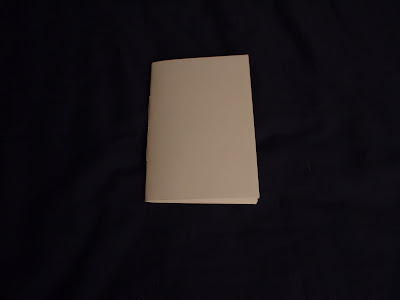Saddle Stitched
This is one of the simplest forms of binding and simply involves folding, piercing and sewing the spine of the booklet, it is quick and easy to do and depending on the paper used it can give a semi-professional appearance but is still obviously hand made. The hardest part of this is to paginate your content before printing, however many programs will have a printing option for this.


Japanese Binding
This type of binding is again fairly simple, only using a needle and thread and produces a very clean and finished look, this is similar to the binding shown in the Dimitri Karakostas zine previously. Positives of this are that there is no need to paginate as all pages are bound as single sheets in order, the downside is that due to the binding it limits how far the pages open which may be a problem, due to this you can only really use the right hand side for images.

Concertina Binding
This is the longest and most complicated style of binding we looked at, it also involves making a front and back cover for our books. However I feel it is a fairly complicated process and one I am likely to avoid as I feel the end product is very delicate and impractical to show multiple photos.


Conclusion
Having looked at these three styles I decided that Japanese binding or something similar would be the most appropriate, my reasons for this are that I will have several booklets and it will make the building process easier. However more importantly I feel that the way they show single images is more relative to this project, we tend to look at portraits individually and so that is how I feel they should be presented in this scenario.